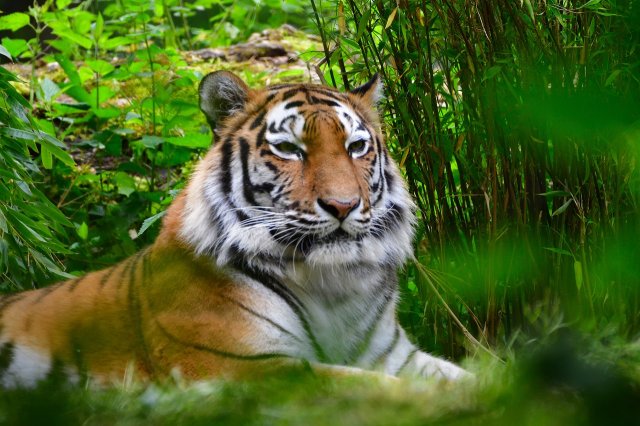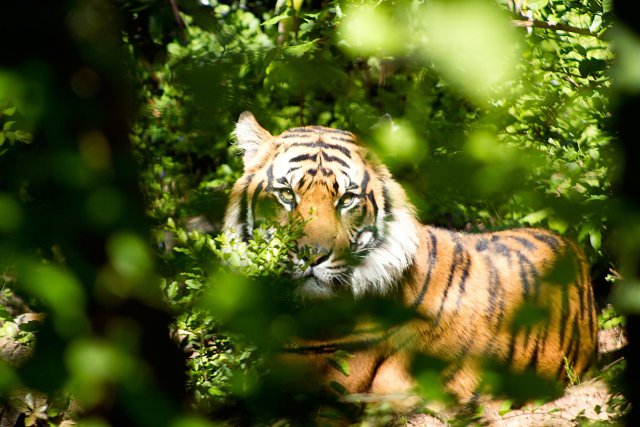Wild Jungle Habitat: 5 Fascinating Facts About Tigers in the Wild
Wild Jungle Habitat: Tigers in the Wild
Tigers are majestic creatures that have captured the imagination of people around the world. With their striking appearance and powerful presence, they are often seen as the kings of the jungle. However, the reality of tigers in the wild is far more complex and fascinating than what meets the eye. In this article, we will explore five intriguing facts about tigers in their natural habitat.
1. Tiger Species and Distribution
Tigers belong to the Panthera genus and are divided into six different subspecies: Bengal, Indochinese, Malayan, Siberian, South China, and Sumatran. Each subspecies has its own unique characteristics and is found in specific regions of Asia.
- The Bengal tiger, also known as the Royal Bengal tiger, is the most common subspecies and is found in India, Bangladesh, Nepal, and Bhutan.
- The Indochinese tiger is found in Cambodia, Laos, Myanmar, Thailand, and Vietnam.
- The Malayan tiger is native to the Malay Peninsula.
- The Siberian tiger, also known as the Amur tiger, is the largest subspecies and is found in the Russian Far East and northeastern China.
- The South China tiger is critically endangered and is found in central and eastern China.
- The Sumatran tiger is found only on the Indonesian island of Sumatra.
Understanding the distribution of tiger subspecies is crucial for conservation efforts, as it helps identify the specific regions where conservation measures need to be implemented.
2. Threats to Tiger Populations
Tigers face numerous threats in the wild, primarily due to human activities. One of the biggest threats is habitat loss and fragmentation. As human populations expand and encroach upon tiger habitats, forests are cleared for agriculture, infrastructure development, and logging. This loss of habitat reduces the available space for tigers to roam and hunt, leading to increased human-wildlife conflict.
Another significant threat to tiger populations is poaching. Tigers are hunted for their body parts, which are highly valued in traditional medicine and the illegal wildlife trade. Their bones, skin, and other body parts are used to make products believed to have medicinal properties or as status symbols.
Climate change is also emerging as a threat to tiger populations. Rising temperatures and changing rainfall patterns can disrupt the delicate balance of ecosystems, affecting the availability of prey and water sources for tigers.
3. Tiger Conservation Efforts
Wild Jungle Habitat: Recognizing the urgent need to protect tigers, various organizations and governments have implemented conservation initiatives. One such initiative is the Global Tiger Recovery Program (GTRP), which aims to double the number of wild tigers by 2022.
Several countries have established protected areas and national parks to safeguard tiger habitats. For example, India has more than 50 tiger reserves, including the famous Jim Corbett National Park and Bandipur National Park.
Conservation efforts also involve community engagement and raising awareness about the importance of tiger conservation. Local communities play a crucial role in protecting tiger habitats and reducing human-wildlife conflict.
4. Tiger Behavior and Hunting
Tigers are solitary animals that require large territories to meet their needs. Male tigers have larger home ranges than females, and they mark their territories with scent markings and vocalizations to communicate with other tigers.
Tigers are known for their exceptional hunting skills. They are ambush predators that rely on stealth and surprise to catch their prey. Tigers mainly hunt large ungulates such as deer and wild boar, but they are also capable of taking down larger animals like buffalo and even young elephants.
Once a tiger has successfully made a kill, it will drag the prey to a secluded spot and consume it. Tigers are known to be opportunistic feeders and can consume a large amount of meat in one sitting. However, they may not eat every day and can survive for several days without food.
5. Tiger Population and Conservation Success Stories
The global tiger population has been declining for decades, but there have been some success stories in recent years. For example, the tiger population in India has shown a significant increase, with the latest census estimating around 2,967 tigers in the country.
Similarly, the population of Amur tigers in Russia has been steadily increasing, thanks to conservation efforts and strict anti-poaching measures. The Siberian Tiger Monitoring Program has been instrumental in monitoring and protecting the Amur tiger population.
These success stories highlight the importance of conservation efforts and provide hope for the future of tigers in the wild. However, there is still much work to be done to ensure the long-term survival of these magnificent creatures.
Summary
Wild Jungle Habitat: Tigers in the wild face numerous threats, including habitat loss, poaching, and climate change. Conservation efforts, such as protected areas and community engagement, are crucial for their survival. Tigers are solitary animals with unique hunting behaviors, and their populations have shown signs of recovery in some regions. By understanding the challenges they face and taking action to protect them, we can ensure that tigers continue to roam the wild jungles for generations to come.
Escape to Nature’s Haven: Turpentine Creek Wildlife Refuge in Eureka Springs, AR





